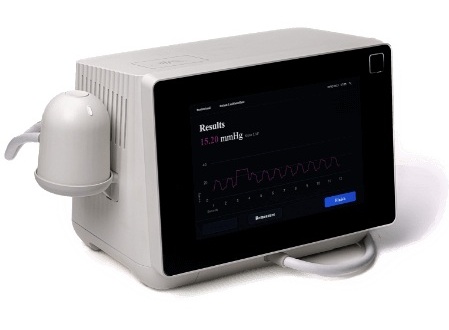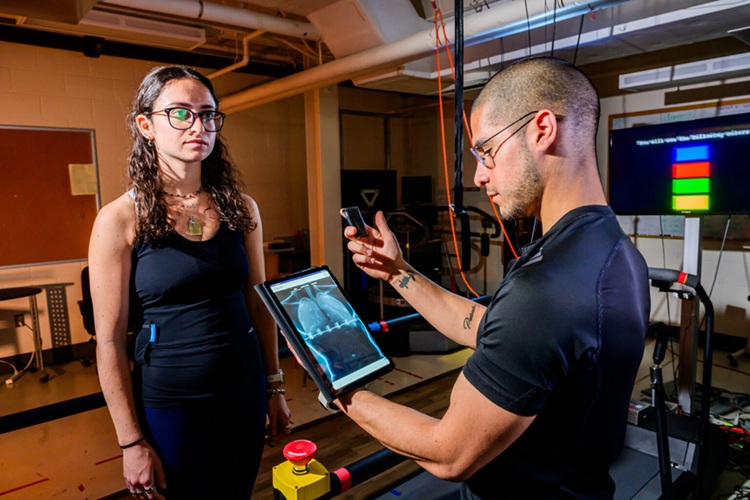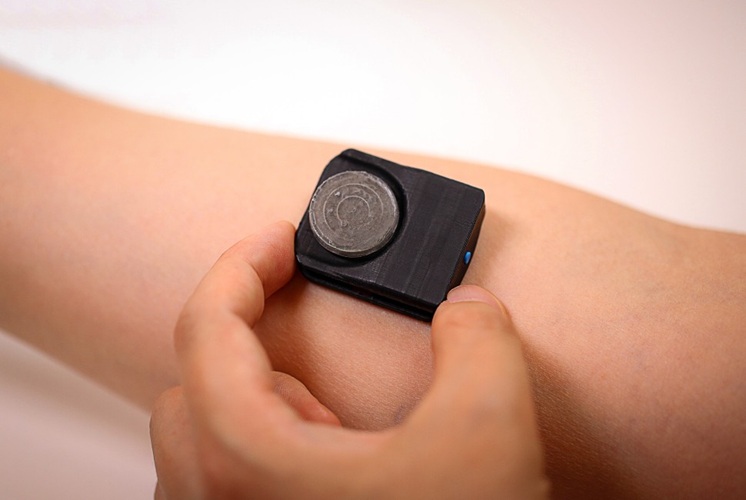Microsensor Platform Turns Existing Implants into Smart Devices for Real Time Monitoring
|
By HospiMedica International staff writers Posted on 27 Dec 2024 |

A revolutionary technology allows for the integration of sensors into existing medical devices, enabling physicians to monitor patients' vital signs in real time and make treatment decisions based on measurable physiological parameters rather than just symptoms.
Microtech (Tel Aviv, Israel) has created an implantable microsensor platform built on a new class of sensor technology, which can be used both independently and incorporated into existing medical devices. The platform consists of a submillimeter, passive, wireless sensor, paired with a proprietary ultrasound system and algorithms that enable accurate reconstruction of various physiological measurements throughout the body. These submillimeter sensors, whether used as standalone devices or integrated into other medical devices, can detect and transmit virtually any relevant physiological data necessary for diagnosing and managing multiple medical conditions. Thanks to their tiny size, passive operation, and the ability to communicate externally via ultrasound, these sensors transform existing implants into smart devices capable of collecting data and performing several functions simultaneously.
The small size and passive functionality of the sensor allow it to convert any mechanical implant into a "smart device" that provides real-time physiological data without affecting the original implant's function. The sensor can be embedded in various implants, ranging from structural heart devices to cardiac rhythm management (CRM) devices. Microtech has begun human clinical trials to assess the use of its microsensor platform in measuring atrial pressures, which is crucial for heart failure management. This technology has the potential to revolutionize the care for heart failure patients, particularly those undergoing treatment with Left Ventricular Assist Devices (LVADs) or heart transplants. The data collected by the implanted sensors will be aggregated and utilized by heart failure specialists to guide clinical decision-making for these patients.
"Incorporating sensors into existing medical devices gives physicians the ability to treat patients based on quantifiable physiological parameters instead of symptoms and is a critical step to growing access to equitable healthcare across the global community. Using a compact home unit, a patient with a Microtech-enabled implant can deliver immediate and highly accurate pressure readings directly to their physician turning geographical distance or mobility challenges into a non-issue" said Dr. Yoram Richter, CEO of Medinol, of which Microtech is a wholly owned subsidiary. "This unique ability is transformative for a wide range of clinical scenarios, including patients suffering from heart failure, glaucoma, hydrocephalous, portal hypertension, AAA endoleaks and many more, providing wider healthcare access and fewer office/hospital visits. Most importantly, from the standpoint of treating clinicians and device manufacturers, sensor-enabled smart-devices will go beyond acute anatomical fixes, extending treatment to lifetime patient care."
Related Links:
Microtech
Latest Surgical Techniques News
- Intravascular Imaging for Guiding Stent Implantation Ensures Safer Stenting Procedures
- World's First AI Surgical Guidance Platform Allows Surgeons to Measure Success in Real-Time
- AI-Generated Synthetic Scarred Hearts Aid Atrial Fibrillation Treatment
- New Class of Bioadhesives to Connect Human Tissues to Long-Term Medical Implants
- New Transcatheter Valve Found Safe and Effective for Treating Aortic Regurgitation
- Minimally Invasive Valve Repair Reduces Hospitalizations in Severe Tricuspid Regurgitation Patients
- Tiny Robotic Tools Powered by Magnetic Fields to Enable Minimally Invasive Brain Surgery
- Magnetic Tweezers Make Robotic Surgery Safer and More Precise
- AI-Powered Surgical Planning Tool Improves Pre-Op Planning
- Novel Sensing System Restores Missing Sense of Touch in Minimally Invasive Surgery
- Headset-Based AR Navigation System Improves EVD Placement
- Higher Electrode Density Improves Epilepsy Surgery by Pinpointing Where Seizures Begin
- Open-Source Tool Optimizes Placement of Visual Brain Implants
- Easy-To-Apply Gel Could Prevent Formation of Post-Surgical Abdominal Adhesions
- Groundbreaking Leadless Pacemaker to Prevent Invasive Surgeries for Children
- Spectroscopy Technique Improves Surgery for Pediatric Epilepsy Patients
Channels
Critical Care
view channel
Novel Intrabronchial Method Delivers Cell Therapies in Critically Ill Patients on External Lung Support
Until now, administering cell therapies to patients on extracorporeal membrane oxygenation (ECMO)—a life-support system typically used for severe lung failure—has been nearly impossible.... Read more
Generative AI Technology Detects Heart Disease Earlier Than Conventional Methods
Detecting heart dysfunction early using cost-effective and widely accessible tools like electrocardiograms (ECGs) and efficiently directing the right patients for more expensive imaging tests remains a... Read more
Wearable Technology Predicts Cardiovascular Risk by Continuously Monitoring Heart Rate Recovery
The heart's response to physical activity is a vital early indicator of changes in health, particularly in cardiovascular function and mortality. Extensive research has demonstrated a connection between... Read more
Wearable Health Monitoring Device Measures Gases Emitted from and Absorbed by Skin
The skin plays a vital role in protecting our body from external elements. A key component of this protective function is the skin barrier, which consists of tightly woven proteins and fats that help retain... Read morePatient Care
view channel
Portable Biosensor Platform to Reduce Hospital-Acquired Infections
Approximately 4 million patients in the European Union acquire healthcare-associated infections (HAIs) or nosocomial infections each year, with around 37,000 deaths directly resulting from these infections,... Read moreFirst-Of-Its-Kind Portable Germicidal Light Technology Disinfects High-Touch Clinical Surfaces in Seconds
Reducing healthcare-acquired infections (HAIs) remains a pressing issue within global healthcare systems. In the United States alone, 1.7 million patients contract HAIs annually, leading to approximately... Read more
Surgical Capacity Optimization Solution Helps Hospitals Boost OR Utilization
An innovative solution has the capability to transform surgical capacity utilization by targeting the root cause of surgical block time inefficiencies. Fujitsu Limited’s (Tokyo, Japan) Surgical Capacity... Read more
Game-Changing Innovation in Surgical Instrument Sterilization Significantly Improves OR Throughput
A groundbreaking innovation enables hospitals to significantly improve instrument processing time and throughput in operating rooms (ORs) and sterile processing departments. Turbett Surgical, Inc.... Read moreHealth IT
view channel
Printable Molecule-Selective Nanoparticles Enable Mass Production of Wearable Biosensors
The future of medicine is likely to focus on the personalization of healthcare—understanding exactly what an individual requires and delivering the appropriate combination of nutrients, metabolites, and... Read more
Smartwatches Could Detect Congestive Heart Failure
Diagnosing congestive heart failure (CHF) typically requires expensive and time-consuming imaging techniques like echocardiography, also known as cardiac ultrasound. Previously, detecting CHF by analyzing... Read moreBusiness
view channel
Expanded Collaboration to Transform OR Technology Through AI and Automation
The expansion of an existing collaboration between three leading companies aims to develop artificial intelligence (AI)-driven solutions for smart operating rooms with sophisticated monitoring and automation.... Read more















